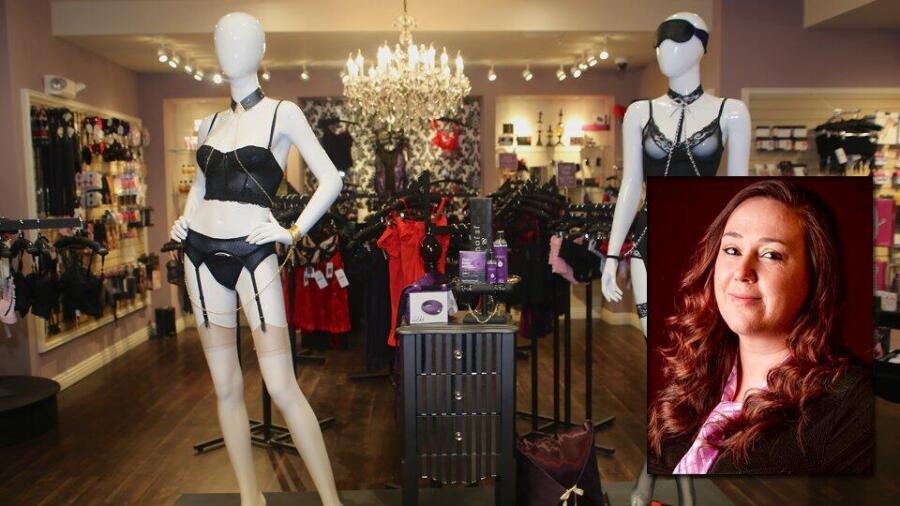Stock markets may be uncertain, wages nationwide may be stagnating and costs increasing, but many adult retail companies are planning to expand in 2019.
That’s not a surprise to Megan Swartz. She said the adult retail industry is strong, “and definitely getting stronger.”
“This is an industry that will never burn out or just be a trend,” the general manager and buyer for Deja Vu Love Boutiques said via email. “It’s sex!”
Swartz is not alone. Across the board, retailers of adult products are at the very least not seeing any contraction in the business. Quite the opposite, many are looking at aggressive expansion, despite a threat from online megalith retailers like Amazon and eBay.
“Our goal is to grow by at least 20 more retail stores by the end of 2022 and triple our online sales,” Swartz said, a goal she agreed was ambitious but attainable.
Coyote Amrich, director of purchasing and product development for Good Vibrations and Babeland, said they are expanding brick-and-mortar operations, but she was more circumspect than Swartz.
“We’re looking at buying smart, continuing to have creative events that engage our local neighborhoods, and we’re always looking at the best assortment," she said. "Doing what we’ve done but doing it stronger.”
Consumers have many online options — Amazon, eBay.com, Alibaba, Walmart, Jet.com, just to name a few — but little quality control. A vibrator bought through Amazon might have come from a Chinese manufacturer through a middleman in Tennessee.
“If you go to Amazon you don’t know what you’re buying. There’s no backbone,” Amrich said. "I’m a buyer. I pick products based on what I think my customers will like.”
It comes down to immediacy, according to Good Vibrations and Babeland President Joel Kaminsky.
“The web has changed the way people shop,” he said. “Customers are used to getting what they want when they want it. Tens of millions of consumers subscribe to Amazon Prime, are used to free shipping, and even used to getting it in two days for free. More and more, same-day shipping is becoming a threat.”
Amrich noted that Good Vibes and Babeland are continuously reinventing how it is that they connect with shoppers.
“We might have a great year but we’re gonna work for that year,” she said. “It’s old-fashioned customer service in new and innovative ways.”
Calling it imperative that his stores stay on track with hands-on customer service, Kaminsky said that it is necessary to ensure that customers have an enjoyable interaction with the Good Vibes/Babeland brands.
“We don’t just want to sell them product, we want to give them a memorable customer experience,” he said. “It is proven that if you do so, you will likely earn their loyalty.”
The convenience of online shopping can never match a positive in-store shopping experience, Swartz added.
“As always, our top marketing technique is guerrilla marketing,” she said. “Nothing beats getting a coupon in your potential guest’s hand. Online can never compete with shoppers who crave the retail experience and want to touch and feel their clothing before they buy it. Online cannot compete for the type of guests who patronize theaters and arcades.”
Deja Vu, she said, has attempted “to be innovative with our brick-and-mortar stores by expanding offerings with services like Pole Fitness Studios.”
Online shopping may pose a challenge for brick-and-mortar adult retailers, but that doesn’t mean they don’t see opportunity there, too. One can, in fact, help support the other.
Social media and online advertising are commonly used marketing avenues for adult retailers, and many see their physical stores boosted by a virtual presence.
“Expanding our online sales and marketing and expanding our brick-and-mortar footprint to drive sales and marketing of our brand and online presence is an easy way to stay ahead of the curve,” Swartz said.
Kaminsky described what he called “webrooming or showrooming,” retailers using physical locations “as showrooms for themselves,” where a customer “can see live products and garner information and then choose to buy online.”
The opposite is also true. Customers are often “getting their information from the web and then, armed with knowledge, make their purchase at the brick-and-mortar store after confirming through touching and testing the product there,” Kaminsky said. “It is especially, for that reason, imperative that we make their visit an experience and leave them 110 percent satisfied and wanting to return.”
According to retailers, the new year will introduce new forms of technology that will provide interactive experiences that “are helping people connect over long distances,” Amrich said. “Making time for intimacy can be really easy for some people and hard for others. This actually allows you to deepen the quality of that connection.”
That being said, the technology behind interactive products is still being proven, and will need to mature somewhat before it becomes truly ubiquitous.
“They’re so cool, but when you use them, the actual products, they aren’t necessarily great,” Amrich said. “You can’t have tech for tech’s sake.”








